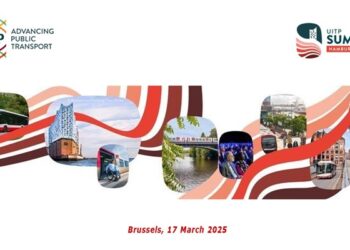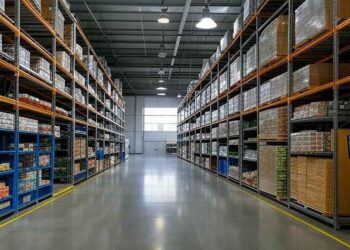Just how will economic pressures, spiralling emissions and the advent of electric cars impact the UK’s road infrastructure? In September, the Chartered Institute of Logistics and Transport hoped to answer with its ‘Vision 2035’ report, detailing a future landscape including hybrid vehicles, controversial road pricing and even underground freight pods.
An ever increasing number of cars on the road, spiralling congestion and carbon emissions as well as the ongoing economic crisis are all factors with serious implications for the future of the UK’s road network.
In an effort to understand the impact of wider societal changes on national transport, the Chartered Institute of Logistics and Transport (CILT) has released its Vision 2035 document. Detailing a range of factors and their possible implications for wider society, CILT has drawn a vision for the future and just what we could expect to see happen to the nation’s transport infrastructure.
The cost of congestion
Such is the severity of the current economic climate, there is very little short-term optimism for the UK’s economic prospects. Government forecasts for the next 25 years predict GDP will remain below 2.5% / year from 2017 onwards, compounding an increased demand for resources caused by an ageing population.
This increased demand could impact upon the funding available for transport, with the service sector forecast to grow more rapidly than the rest of the economy causing higher growth in cities including London, Manchester, Birmingham, Bristol, Cardiff and Edinburgh.
The economical impacts on the network of the near future will be coupled alongside a growing need for investment into road infrastructure as a result of significant passenger requirements. Road congestion, a factor that is already a considerable drain of economic resources, is currently estimated to cost the UK approximately £7-8bn a year. The 2006 Eddington report also estimates that should congestion go unchecked, it could cost the UK as much as £22bn a year by 2025.
Costs of services are also expected to be inflated by the increase of environmentally associated costs.
Environmental factors
Transport is currently the only sector of the UK economy that has not witnessed a decline in GHG emissions since 1990, with domestic transport accounting for 22% of total UK GHG emissions. Greenhouse gas emissions actually rose 3% in 2010, blamed on a particularly harsh winter, leading to a higher priority given to reducing transport-relating missions.
With the UK government committed to reducing carbon emissions, its policy depends heavily upon the introduction of more efficient petrol engines and the widespread use of electrical vehicles.
Replacement of the conventional car and van fleet with both electric and hybrid vehicles is considered as central to the government’s aims to reduce transport emissions, with the Committee on Climate Change (CCC) forecasts calling for 31-37% of the UK’s car fleet to be electric or hybrid by 2030.
The government currently incentivises the use of such vehicles through road tax benefits, however this could prove to be a double-edged sword as the universal adoption of electric vehicles would see road taxes become inadequate as a means for charging for the use of roads.
As a result, any such incentives provided by the government will need to be combined with road pricing if they are to be most effective.
Tolls on the roads
Road pricing, although a contentious issue, could be seen as the most obvious instrument to remedy the loss of such revenue through reduced road taxes, whilst also aiding growing problems such as congestion, emissions and a need for increased investment in infrastructure.
Speaking at the launch of the CILT Vision 2035 report, Sir David Rowlands commented that road pricing could be inevitable due to congestion although “HS2 could solve capacity problems for a generation, if not more.”
The report has highlighted a changing balance of power, with multinational corporations becoming far more influential in policy and investment from a political perspective.
With the voluntary sector being increasingly called upon, the ‘user pays’ principle is becoming enshrined in government thinking and could lead to road user charging in order to cater for the shortfall created in decreasing road taxes.
Although the congestion charge in central London sets a precedent for such a scheme, the CILT report insists there is no current consensus in favour of local or national road charging. In stark contrast, a similar scheme in Manchester was withdrawn after strong political backlash saw a referendum on the subject imposed, resulting in 78.8% of people voting against the charge.
The notion of user charging and the potential implications on equality of opportunity has raised serious questions, with transport seen as vital to providing access to jobs, education and healthcare. As a result, user charges at the point of consumption, such as road tolls or a system similar to London’s congestion charge, could be seen as socially divisive and the government would certainly face initial opposition to any such proposal.
As a result, the CILT report proposes that any such road charging needs to incorporate measures that help disadvantaged people that are dependent on the use of a car. Offsetting reductions in fuel duty as well as encouraging flexible working hours to avoid peak toll charges have been mooted as possible solutions.
A new way to pay
Should widespread road charging become common place, the means to charge users would need to be carefully implemented and efficiently maintained to ensure the right people are charged the right amount. Such payment options being vaunted include smartphones (or their successors), which would enable users to be tracked and billed automatically, or even contactless bankcards at tolls to enable speedy payment.
New payment technologies would also facilitate pricing, which would result in further optimised efficiency of public transport and road systems through enabling charges to be adjusted dynamically according to real time capacity and availability.
Vision for the future
Adding to the technological advances already highlighted, an intelligent infrastructure could be established, with automated highway lines segregated for freight and car traffic.
Vehicles would effectively drive themselves, with intelligent highways facilitating a favoured traffic mix to minimise disruptions related to road works and maintenance programmes whilst also maximising road capacity.
Further down the line, freight could be removed from the roads entirely through the advent of underground freight pipelines.
Powered by electric linear induction motors, freight would be packed into pods capable of holding between eight and ten tons and shipped to their destination automatically. Research is currently underway, with a small scale scheme conceivable by 2035.
































